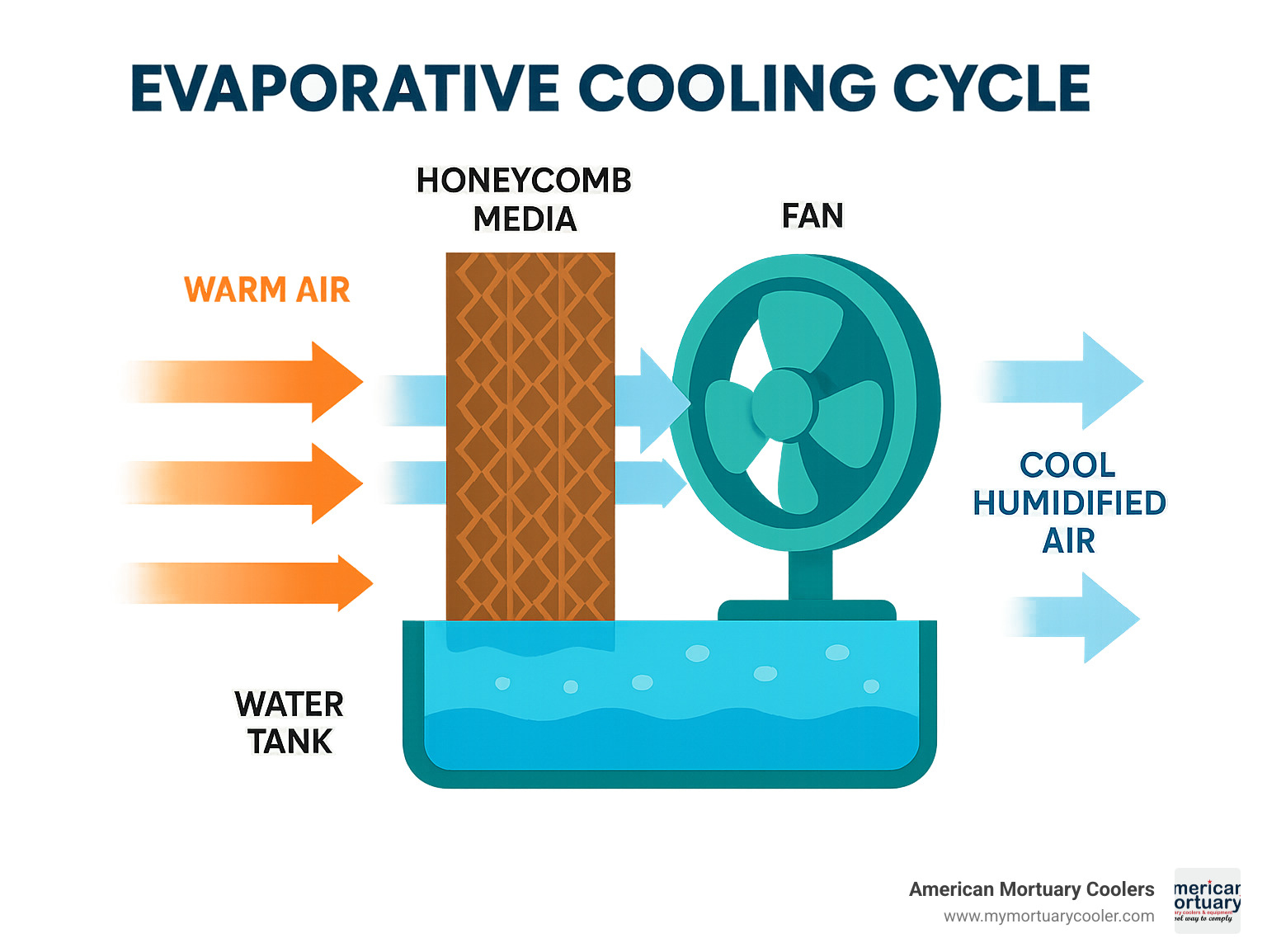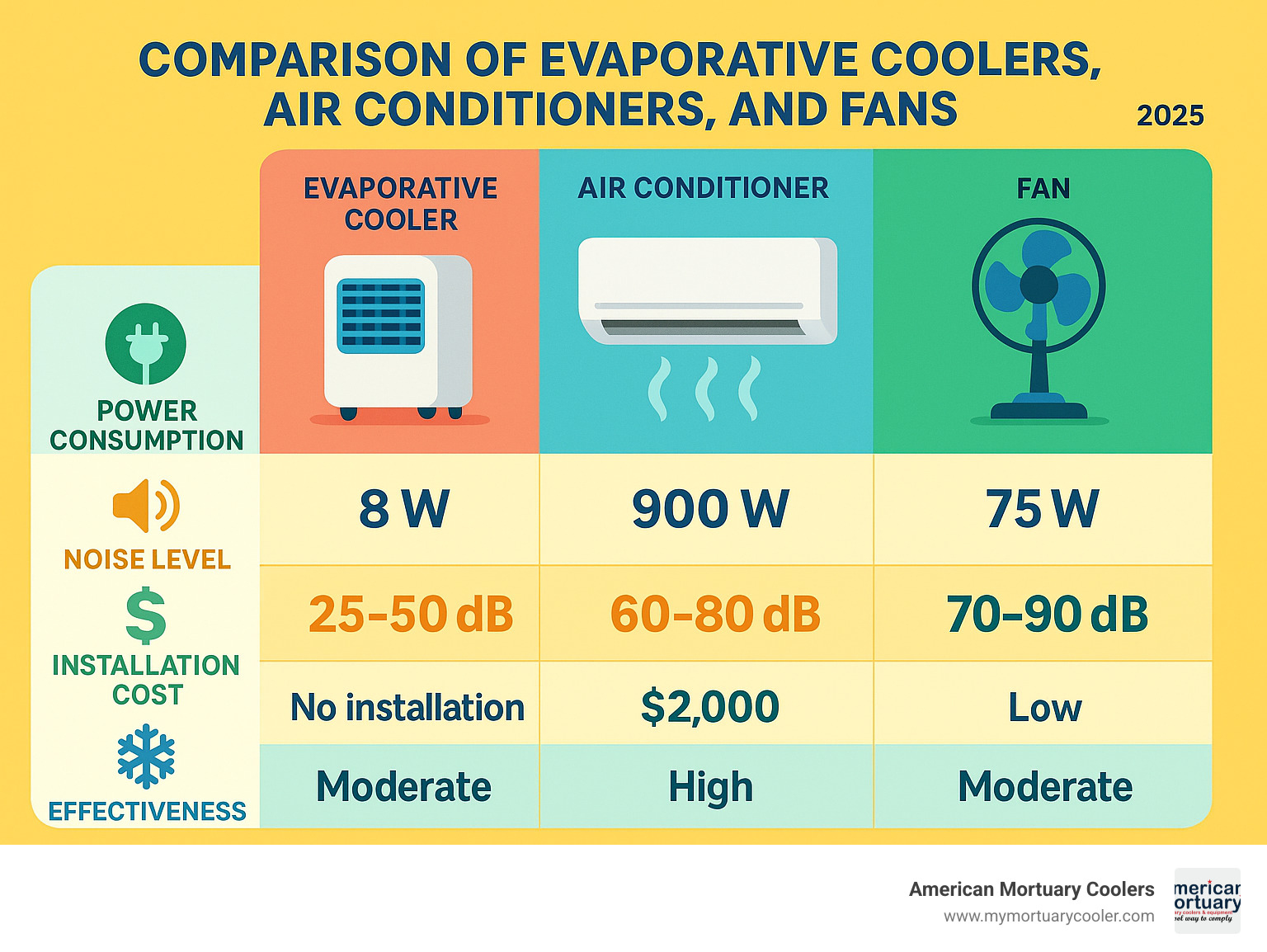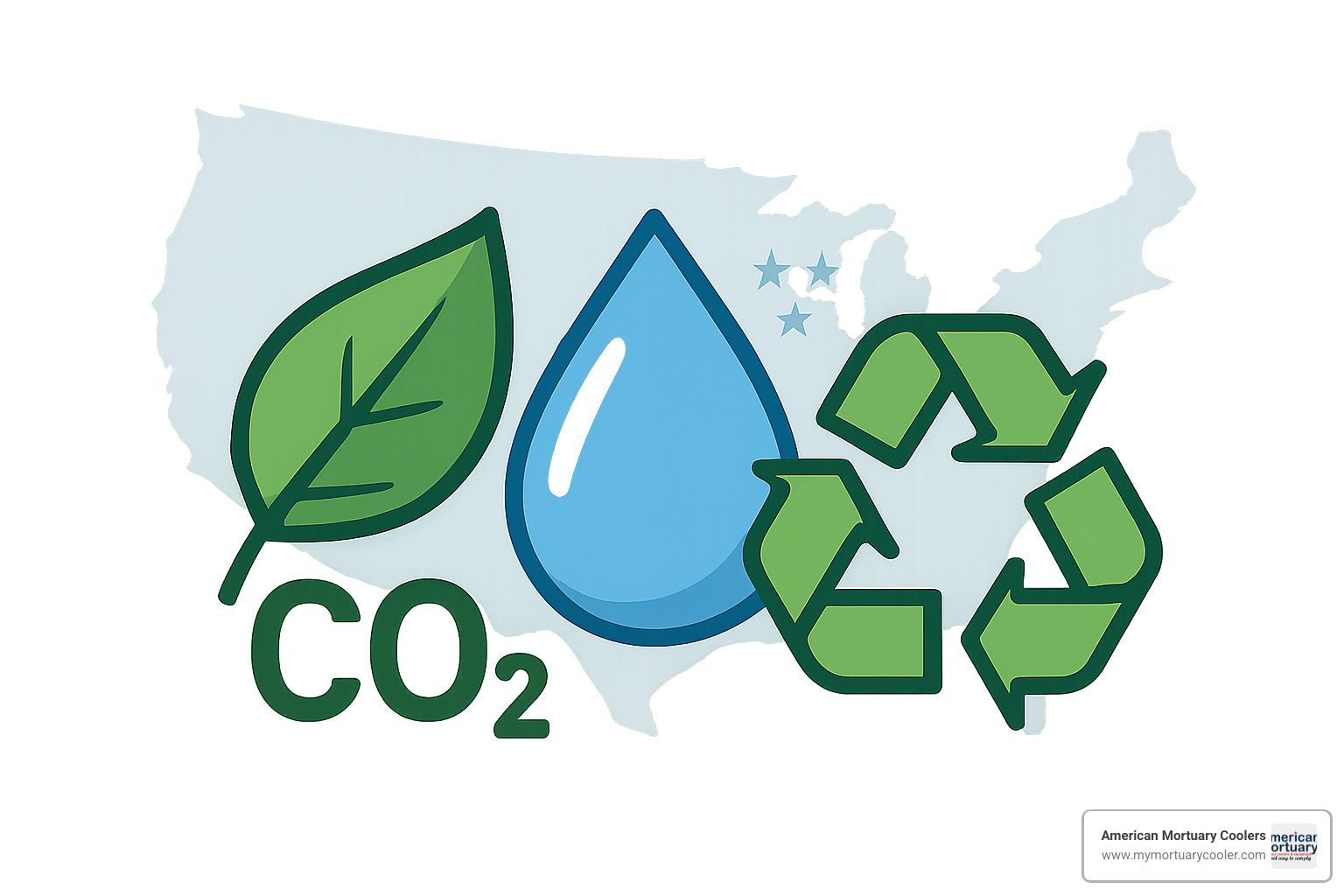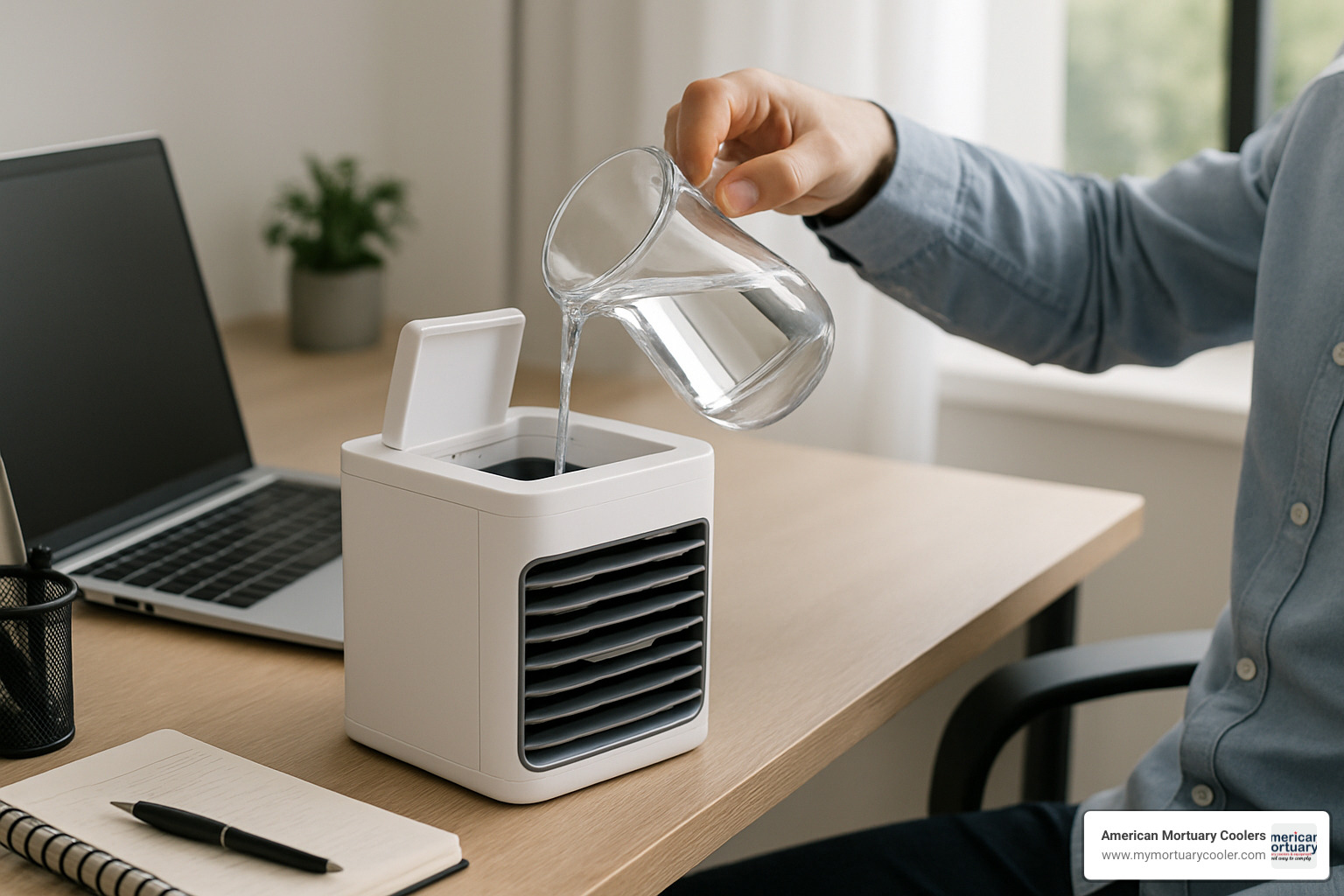Why Evaporative Portable Air Coolers Are the Game-Changer for Personal Cooling
Evaporative portable air coolers are compact, energy-efficient devices that use water evaporation to cool and humidify the air around you. Unlike traditional air conditioners that require expensive installation and consume 300+ watts of power, these units plug into any USB port and use just 7.5-12.5 watts while dropping temperatures by 4-17°C in your personal space.
Quick Facts About Evaporative Portable Air Coolers:
- Power consumption: 7.5-12.5W (vs 300+W for AC units)
- Cooling capacity: 4-17°C temperature drop
- Noise level: 25-50 dB (whisper-quiet operation)
- Installation cost: $0 (plug-and-play)
- Coverage area: 2-3 square meters of personal space
- Environmental impact: Freon-free and eco-friendly
These devices work by drawing warm air through water-saturated honeycomb media, where evaporation naturally absorbs heat. The result is a portable cooling solution that's perfect for desks, bedrooms, travel, and anywhere you need instant relief from heat without the complexity of traditional air conditioning.

What Are Evaporative Portable Air Coolers?
Evaporative portable air coolers work like nature's own air conditioning system. These personal cooling units use a simple but effective design: a water tank feeds moisture to honeycomb media while a fan pulls warm air through this wet media, where evaporation naturally absorbs heat from the air.
The temperature drop these units deliver ranges from 4 to 17 degrees Celsius, depending on environmental conditions. They're designed for personal comfort with a coverage area of about 2-3 square meters. What sets these units apart is their incredibly low power draw of just 7.5 to 12.5 watts - less than many LED light bulbs.
Core Components of Evaporative Portable Air Coolers
The heart of any evaporative portable air cooler is its pump system, which keeps water flowing from the reservoir to the cooling media. The filter or cooling cartridge maximizes surface area where water meets air, creating optimal evaporation conditions.
Most modern units use USB power, making them incredibly versatile. The airflow capacity varies from 49 CFM for desktop models to 2,100 CFM for larger portable units.
How Evaporative Portable Air Coolers Work in 3 Steps
First, the unit draws air from your environment through intake vents. Next, warm air passes through water-saturated honeycomb media, where evaporation absorbs heat from the air stream. Finally, the unit releases a cool breeze of conditioned, humidified air into your space - similar to how perspiration cools your body through evaporation.
Evaporative Portable Air Coolers vs. Air Conditioners & Fans
When beating the heat, you have three main options: traditional air conditioners, fans, or evaporative portable air coolers. Air conditioners use refrigerant chemicals and compressors to remove heat. Fans just move hot air around. Evaporative portable air coolers use only water and air movement to create genuine cooling.
Air conditioners rely on chemicals like freon, which can harm health and environment if leaked. Evaporative portable air coolers use only water - completely safe around family and pets. Air conditioners remove moisture, often causing dry throat and static electricity. Evaporative portable air coolers add beneficial humidity.

Cost differences are dramatic. Installing traditional AC costs around $2,000 on average, while evaporative portable air coolers have $0 installation cost. Energy use: air conditioners consume 300+ watts, fans use 50+ watts, while evaporative coolers use just 7.5-12.5 watts.
For quiet operation, evaporative coolers run whisper-quiet at 25-50 dB versus air conditioners at 60-80 dB or fans at 70-90 dB.
Interesting scientific research on humidity and virus survival shows higher humidity reduces virus survival on surfaces. When indoor humidity increases from 20% to 80%, coronavirus half-life drops from 18 hours to 6 hours.
Energy & Cost Savings with Evaporative Portable Air Coolers
Evaporative portable air coolers use so little electricity that running one 24/7 for an entire month costs less than $3. The $0 installation cost eliminates contractors, permits, and hassle.
A window AC running 8 hours daily adds $50-100 to monthly electric bills. An evaporative cooler running the same time? Less than $1 extra per month.
Comfort Differences: Air Quality, Dryness, and Airflow
The comfort experience with evaporative portable air coolers feels more natural - a gentle, naturally humidified breeze rather than harsh, dry cold air. The beneficial humidification combats dry skin, static electricity, and scratchy throat.
As air passes through wet media, it naturally captures dust particles, providing air quality improvement. The gentle humidity creates less hospitable environments for airborne pathogens.
For more cooling options, check our Complete Guide to Choosing a Cooler Portable Air Conditioner.
Benefits, Limitations & Eco Impact
After years in the cooling industry, I've seen how evaporative portable air coolers pack serious advantages. The ultra-low power consumption at 7.5-12.5 watts means all-day operation costs less than a cup of coffee. Freon-free operation eliminates harmful chemical leak concerns around family or pets.
The whisper-quiet operation at 25-50 decibels makes them quieter than normal conversation. Spot cooling capability focuses energy exactly where you need it rather than cooling entire rooms unnecessarily.

Climate suitability is the main limitation - these coolers work best when humidity stays below 60%. Refill routines require adding water every 3-8 hours depending on usage. Health and safety concerns are minimal with proper maintenance.
Environmental Perks of Evaporative Portable Air Coolers
Evaporative portable air coolers are genuinely good for our planet. While traditional air conditioners use refrigerants hundreds of times more harmful than CO₂ if leaked, these units use only water.
Recyclable cartridges mean less landfill waste, and many evaporative media components can be composted. Minimal e-waste generation results from simple construction without complex compressors and refrigerant systems.
Common Limitations & How to Overcome Them
High humidity doesn't have to be a deal-breaker. Use coolers during driest parts of the day for best results. Cross-ventilation with cracked windows lets humid air escape while fresh air flows in. Ice packs in the water reservoir boost cooling during heat waves.
How to Choose & Use a Portable Evaporative Cooler
Choosing the right evaporative portable air cooler starts with understanding airflow. 200 CFM handles about 50 square feet, while 2,000 CFM can cool up to 500 square feet. For personal cooling, lower CFM units are more energy-efficient and quieter.
Tank capacity affects daily convenience. Larger tanks (1,000ml or more) mean fewer refills but add weight and bulk. Continuous-fill options connect directly to water sources for automatic refilling.
Smart controls with app connectivity and scheduling integrate seamlessly into daily routines. Portability features like sturdy handles and compact designs matter for mobile use.
For deeper guidance, our Ultimate Guide: Cooler Units covers sizing to specialized applications.
Best Features for Evaporative Portable Air Coolers
Oscillation capability distributes cool air across wider areas instead of blasting one spot. Timer functions conserve water and energy while ensuring comfort when needed.
UV sterilization helps maintain water quality and prevent bacterial growth. Battery pack compatibility enables truly portable operation anywhere. Travel cases protect your investment during transport.
Quick Setup & Maintenance Checklist
Daily tasks take less than a minute: check water level, ensure clear air vents, position for good airflow.
Weekly maintenance: empty tank completely, refill with fresh water, gentle wash with mild soap, wipe exterior.
Monthly care: replace evaporative cartridge every 3-6 months, deep clean internal components, test all functions.

Storage tips: thoroughly dry all components before storing, remove and store cartridges separately, keep in clean, dry location.
Practical Use Cases & Real-World Testimonials
Evaporative portable air coolers have revolutionized personal comfort across diverse situations. Sarah from Tennessee reduced her home office cooling costs from $200 monthly to under $5 while maintaining perfect workspace comfort.
Bedroom applications are popular among light sleepers. Unlike air conditioners with jarring temperature swings, these units provide consistent, whisper-quiet comfort at 25-45 dB. Users describe the gentle humidified airflow as "sleeping near a peaceful stream."
The RV community has acceptd these coolers, especially for boondocking. When running on solar power, a cooling system using less electricity than a laptop becomes invaluable. Compact design fits tight RV spaces without complex installation.
Outdoor entertaining gets upgraded with portable cooling zones. Instead of crowding around one shady spot, you can create comfort wherever needed without permanent installation or massive energy bills.

Influencers like @_aswewander showcase their evaporative portable air coolers during van trips, highlighting freedom from traditional power sources. Pet owners appreciate safe, gentle cooling without harsh chemicals or sudden temperature changes.
Travel-Ready Evaporative Portable Air Coolers for Digital Nomads
Digital nomads need flexible gear, and evaporative portable air coolers deliver that freedom. USB-powered operation works with laptops, power banks, or car chargers.
Power bank compatibility provides 15-20 hours of operation with standard 20,000mAh banks. Compact models fit airline carry-on luggage with straightforward TSA screening. Campsite comfort enables productive remote work in natural environments.
Workplace & Medical Settings
Open offices solve temperature wars with desk pod applications - personal comfort zones without affecting colleagues. Laboratory bench cooling serves specialized needs where traditional AC might interfere with sensitive equipment.
Natural humidification benefits dry climates and forced-air heating buildings. Improved air circulation promotes better ventilation compared to recirculating AC systems.
Frequently Asked Questions about Evaporative Portable Air Coolers
Do evaporative portable air coolers work in humid climates?
Evaporative portable air coolers perform best when relative humidity stays below 60%. In humid climates, they still provide gentle air circulation and some temperature relief. Use them during driest parts of the day when humidity naturally drops.
Cross-ventilation helps in humid conditions - crack a window to let moisture-heavy air escape. Adding ice packs to the water reservoir provides extra cooling boost when needed.
How much water and electricity do they actually use?
Evaporative portable air coolers typically consume 0.5-2 liters of water per day during normal use. Water usage depends on conditions - hot, dry days mean more evaporation.
At 7.5-12.5 watts, running one for 8 hours daily costs about $0.25-0.50 per month in electricity versus $50-100 monthly for traditional air conditioners. A standard 1,000ml tank provides 3-8 hours of continuous operation.
Will they make my room too damp?
Proper ventilation prevents dampness when using evaporative portable air coolers. Following manufacturer ventilation guidelines keeps humidity comfortable and healthy.
The key is allowing humid air to escape while drawing in fresh air - even a small crack in a window provides enough ventilation. Humidity monitoring between 40-60% hits the sweet spot for cooling effectiveness and comfort.
Conclusion
After years helping facilities find cooling solutions, I've learned the best technology often comes from simple ideas. Evaporative portable air coolers harness natural cooling processes in convenient, modern devices.
These units solve real problems without creating new ones. Unlike traditional AC demanding expensive installation and high energy bills, evaporative portable air coolers simply plug in and work. The 7.5-12.5 watt consumption means all-day operation costs less than coffee.
The environmental story is compelling. Choosing water-based cooling over chemical refrigerant systems makes financial and environmental sense. Every evaporative portable air cooler represents meaningful energy savings and reduced impact.
Versatility impresses me most. Whether you're a digital nomad, student, or someone wanting personal cooling without whole-house AC, these coolers adapt to your lifestyle.
The real test is whether technology improves daily comfort. Based on testimonials and growing popularity, they're passing with flying colors. The combination of gentle cooling, natural humidification, and whisper-quiet operation creates comfort many users prefer to traditional AC.
The low entry cost makes experimentation easy. Start with a basic model and see how it fits your needs and environment.
For detailed selection guidance, our Ultimate Guide: Cooler Units covers choosing the right cooling solution for your specific situation.


















